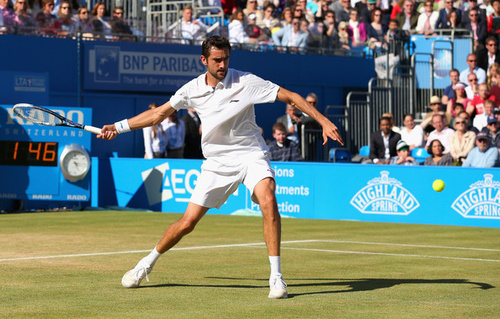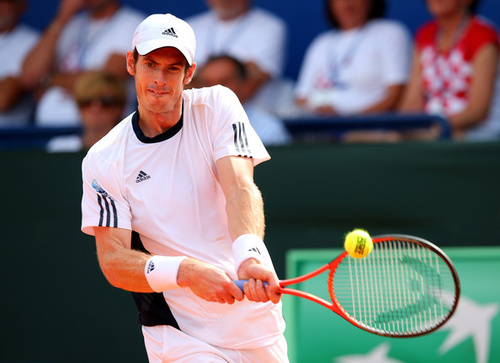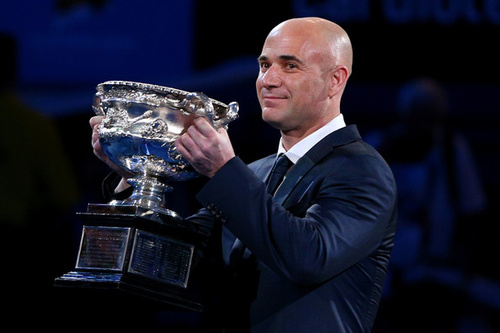Don't miss any stories → Follow Tennis View
FollowA Bad Penny: Tennis Doping Programs Need More Transparency
Every sport has that handful of issues that, much like a bad penny, always seem to keep turning up. One such issue that is increasingly becoming a problem in a variety of sports is the use of Performance-Enhancing Drugs, or as they are more commonly known, PEDs. Sadly, tennis is no exception to this trend. With the recent suspensions of ATP players Viktor Troicki and Marin Cilic, the International Tennis Federation’s (ITF) Anti-Doping Policy will deservedly come under scrutiny again.

The ITF has done a decent job of collecting samples from the players when one stops to consider the amount of territory that officials have to cover due to the global nature of the sport. Furthermore, the ITF, together with the ATP and the WTA, has delivered on its promise from earlier this year to implement a biological passport program. As of early August, it was confirmed that this program, though not yet at full capacity, is up and running. The biological passport program should allow officials to gain a better picture of a player’s blood profile, aiding them in their efforts to weed out those looking to gain an edge through the use of PEDs.
For all the credit that the governing bodies of tennis deserve for these efforts, however, there is an equally important component of the Anti-Doping Policy that needs to be more satisfactorily addressed, which is the concept of transparency. This component is still very much missing, and it is the lack of transparency that can be as damaging to the sport as any player actually testing positive for a banned substance.
First, there is the absurdity that can arise from a refusal to comment on what everyone else already seems to know. A prime example of this can be seen in the Marin Cilic case, which was decided earlier this week. The former top-10 player and Australian Open semifinalist received a nine-month ban for ingesting (likely accidentally) the banned substance nikethamide. While the specifics were not known until this week, unconfirmed reports of Cilic’s failed drug test leaked out over a month ago. Despite the leak, the ITF refused to comment on the ongoing case, since it is against its policy to do so unless a player has been found guilty of committing a doping violation. Unfortunately, that refusal to elaborate on a matter that was increasingly becoming common knowledge only served to make a mockery of the secretiveness that surrounded Cilic’s case thereafter.
Andy Murray certainly did not agree with the ITF’s approach. “It’s about time everyone knew what was going on,” said the reigning Wimbledon champion. “Everyone knows what’s happening and he has clearly failed a drugs test. I just don’t know why that can’t come out. It’s not that he’s injured. I don’t get that…Once it’s out in the open, then whether the hearing took two months, or three or four months, so long as he isn’t playing in that period [it doesn’t matter].”

As much as one can appreciate the sentiment behind the ITF’s reasoning for not coming forward, it might be better served to consider Murray’s interpretation of the event. In an ordinary criminal trial, no matter how serious, anyone can know who stands accused and of what the defendant is being accused well before the examination of the facts and the verdict. There are also advantages to being more open throughout the process.
By coming forward right away, the ITF can control how the news is disseminated. When the news is leaked, as it was in Cilic’s case, it appears that the ITF is trying to hide something. Additionally, a player is bound to incur some type of stigma when fellow competitors notice that player’s unexplained absence or unconfirmed doping reports that surface in the media. What difference does it make if the ITF comments on a case prior to a verdict being reached? Finally, and perhaps most importantly, an earlier statement from the ITF in the doping case process likely would reduce the number of “silent ban” conspiracy theories.
The concept of the silent ban has increasingly become a popular theory among some tennis fans, and some of the game’s biggest stars are not exempt from being targets of it either. Two of the marquee names in the sport, Serena Williams and Rafael Nadal, are prime targets of conspiracy theorists. Both are considerably more muscular than a good number of their fellow competition. Both have endured some injuries consistent with steroid use. Both have also experienced long injury layoffs.
Call it optimism, but the odds are that everything is above board with Williams and Nadal. It is however, it is easy to see where a conspiracy theorist would interpret these factors as proof that these two are using PEDs and sitting out an injury layoff to decrease the odds of getting tested or quietly serving a silent ban. A case like Cilic’s in which he has quietly been serving a few months of a ban that he knew was likely coming only adds credence to this line of thinking.
The silent ban may also seem more plausible in light of what has happened in other sports. The guilty verdict against Lance Armstrong has proven a huge blow to cycling, and the recent turmoil of Alex Rodriguez certainly has not helped baseball at all. Cynical fans would see it as only natural that tennis would look to protect the stars that are its bread and butter to avoid a similar debacle.

Furthermore, there is already a precedent for tennis protecting its moneymakers. In his autobiography Open (2009), Andre Agassi confessed that he used and tested positive for crystal meth in 1997. Testing positive should have meant a ban for Agassi, although it would not have been severe because crystal meth is considered more a recreational drug than a PED. But Agassi did not even serve a light sentence. Instead, he wrote a letter to the ATP saying he unwittingly ingested the drug and got off without so much as a slap on the wrist.
While many have praised Agassi for having the courage to make such an admission, it has had a negative impact on the sport’s perception. If the ATP protected a star like Agassi then, who is to say the governing bodies are not doing something similar now? And in Agassi’s case, there was still no retribution after the fact because he did not make his confession until after he knew the statute of limitations had passed on his prior indiscretions. Whenever a top player now has to step away from the game due to injury, or enjoys an elongated surge in results, it is viewed with a cynical eye. Is that player honestly injured? Did that player really put in the hard yards at the gym? Or is that top player getting a little illegal help that the establishment is willfully ignoring because that player sells tickets?
The bottom line is that there is no way to eradicate conspiratorial theories. There always will be those who want to assume the worst. But tennis can cut down on that line of thought. It can cut out the absurdity. It can instill confidence that it is doing everything possible to maintain a level playing field for everyone from the world No. 1 to the lowliest journeyman. It all begins with increased transparency.










